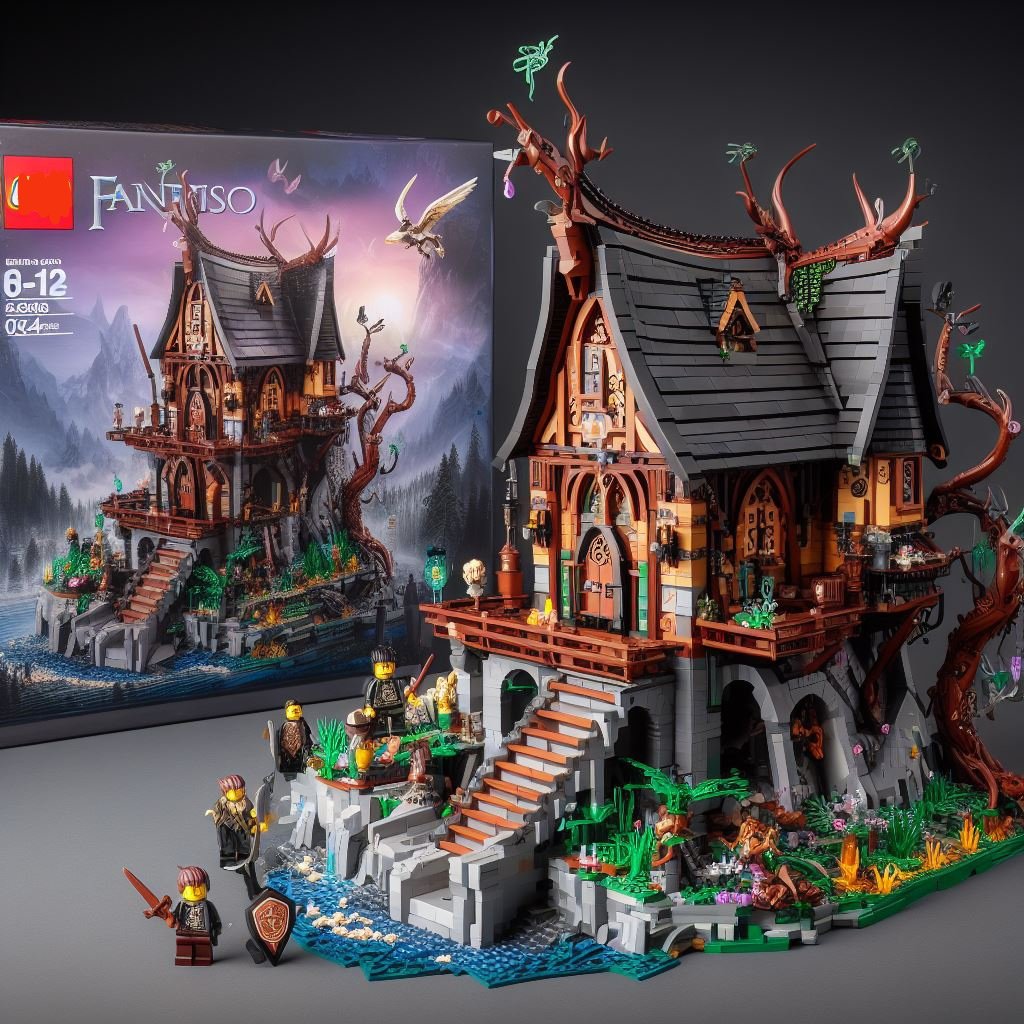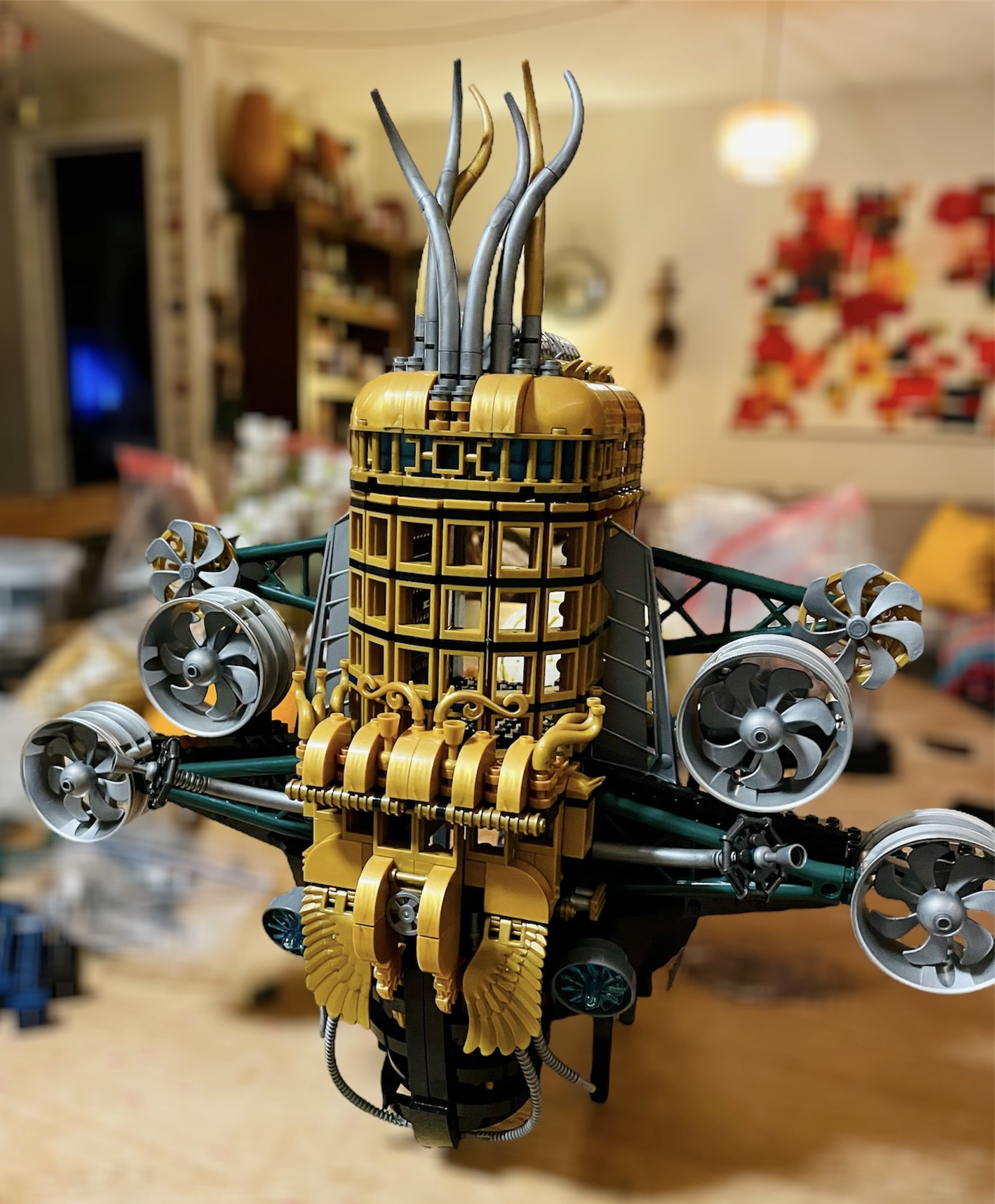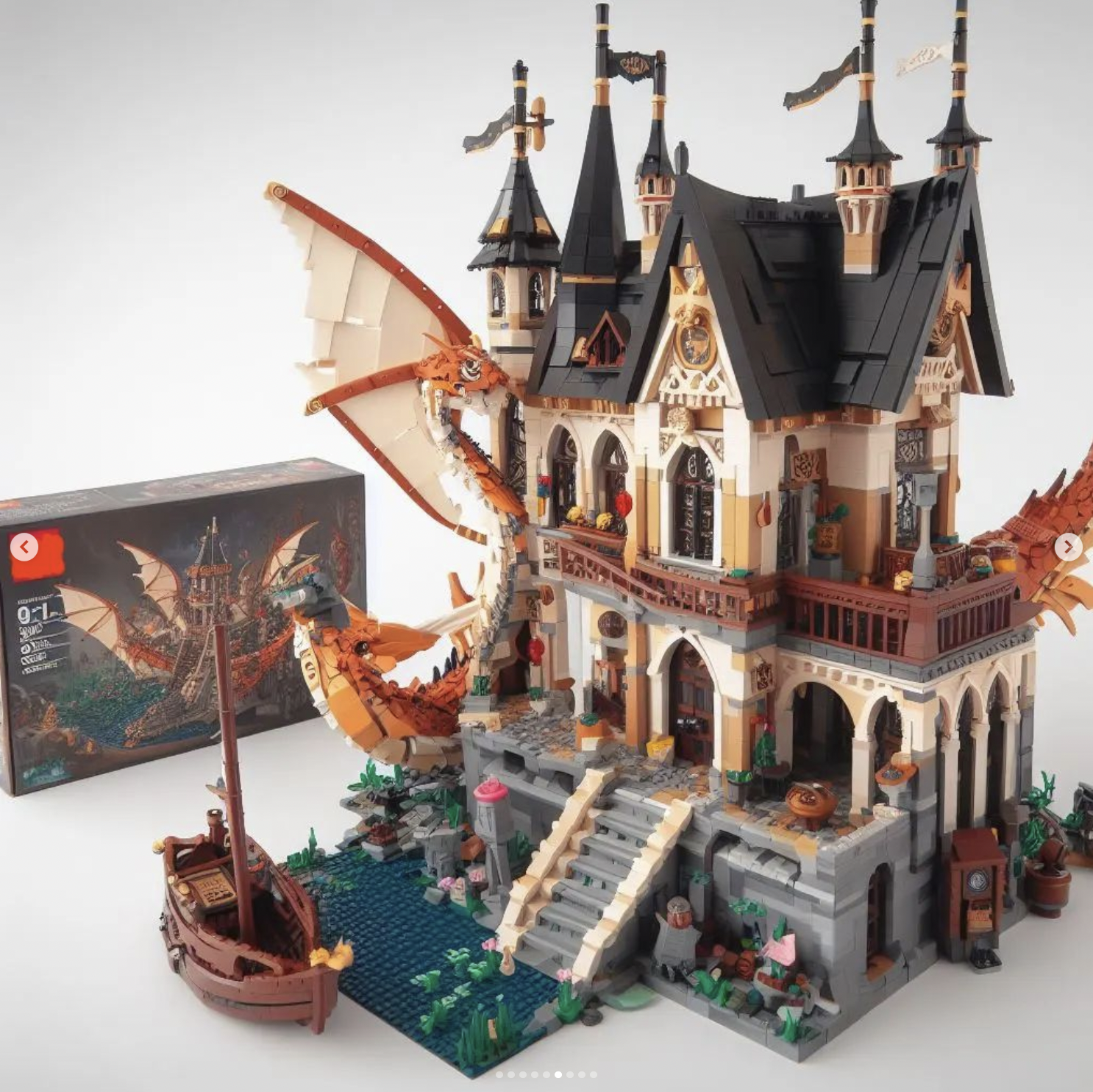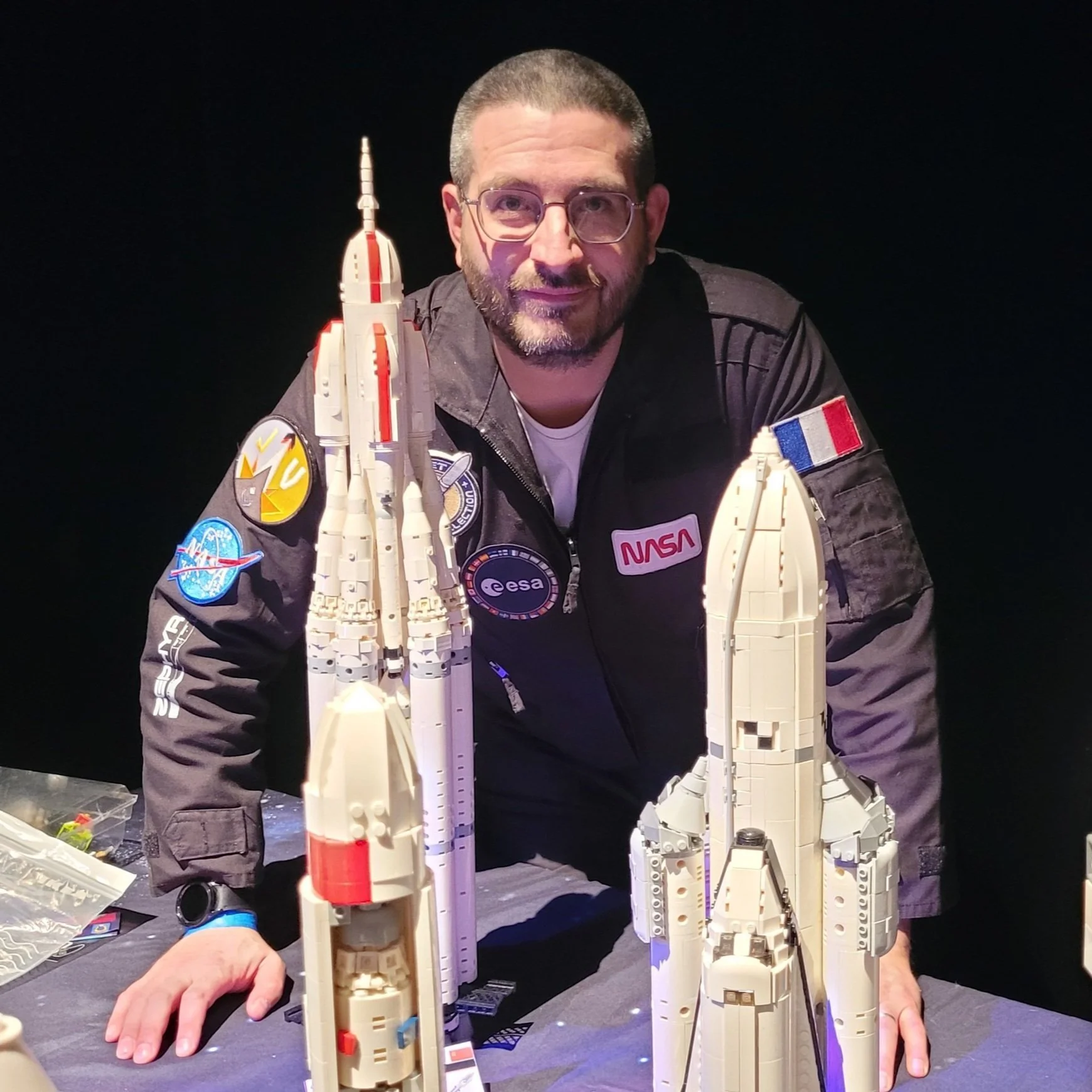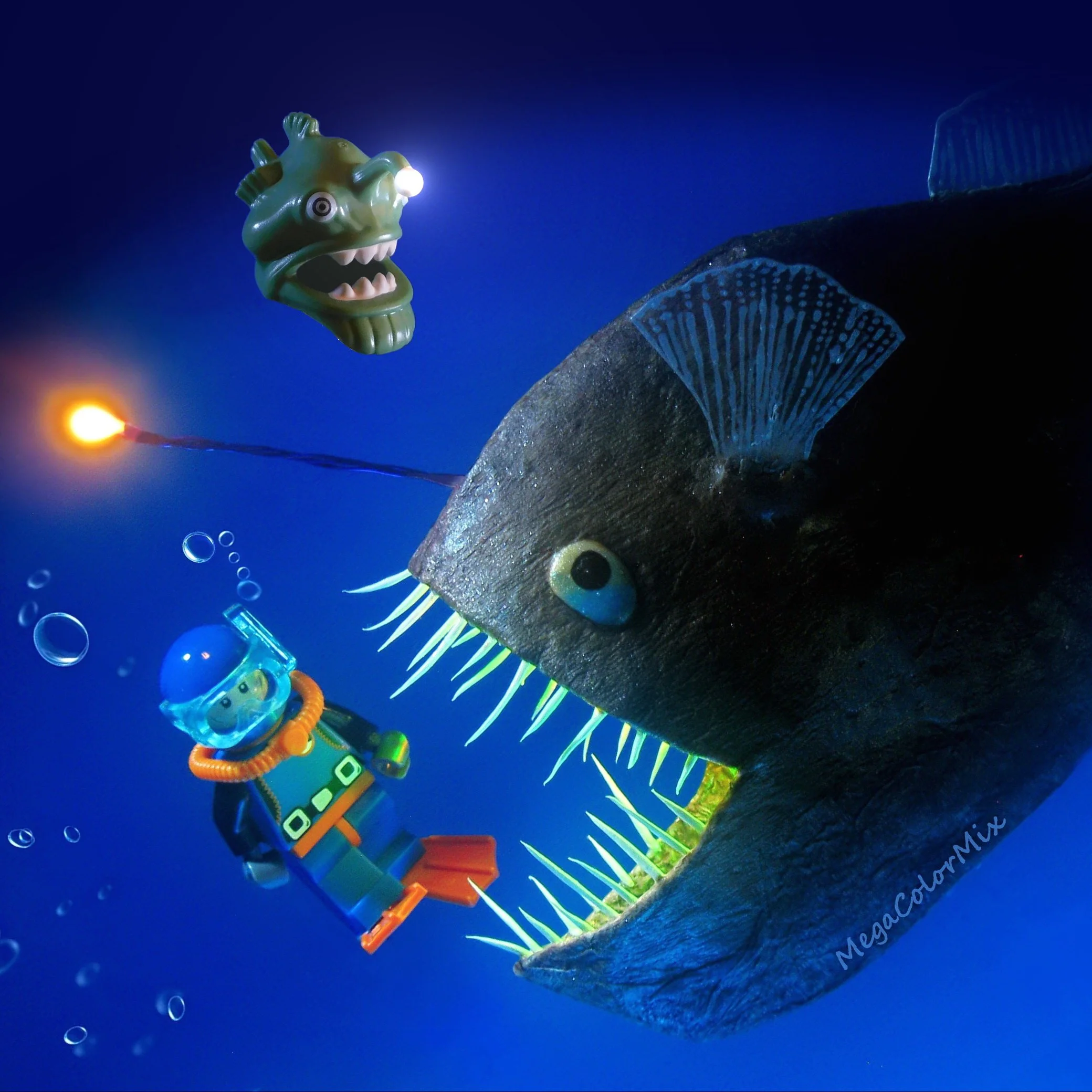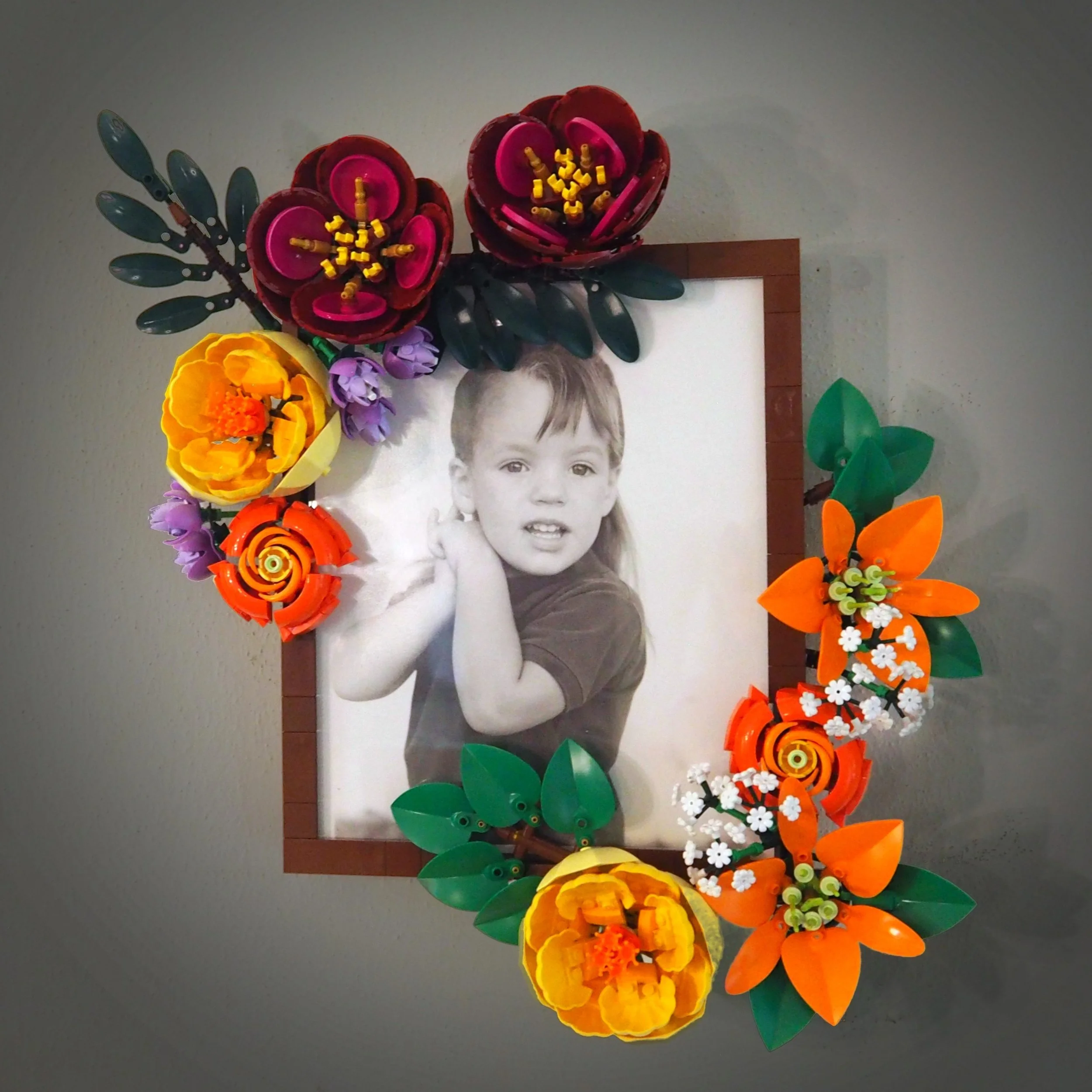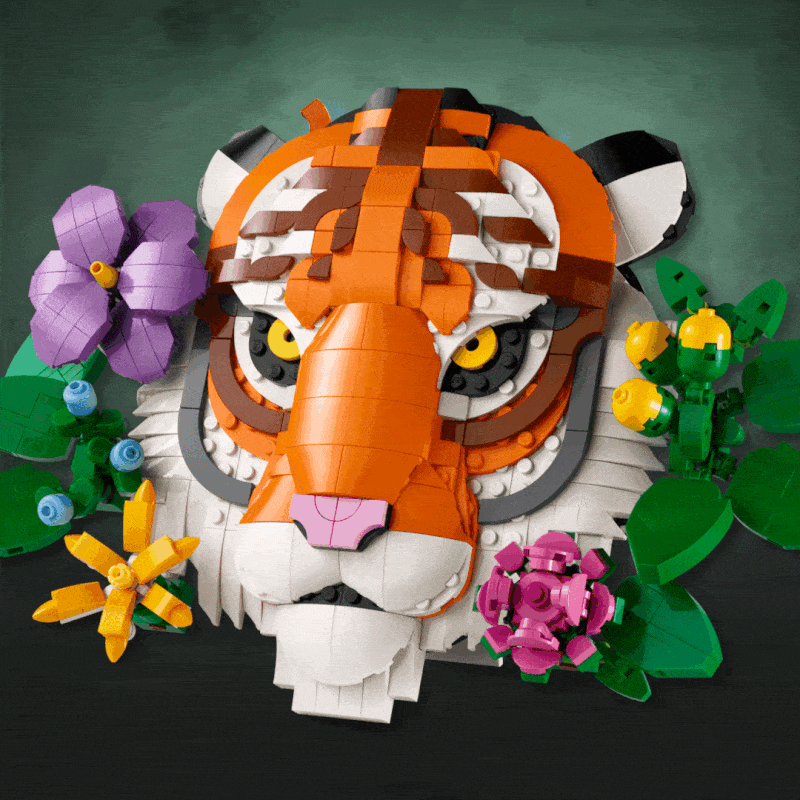The AI Revolution: How Artificial Intelligence Is Impacting the LEGO Community
/Today’s article comes from guest contributor Jesse Gros who discusses how AI-generated “LEGO” sets are sparking a debate between inspiration and imitation within the AFOL community.
From Pixels to Plastic
Is the world of MOC building on the brink of a transformation? This past week, high-quality IA-generated “LEGO” sets started popping up on Instagram on pages like @brick4world. At first glance, these images looked like real sets. When I saw the first one, my heart skipped a beat: “Oh, I’m buying that set for sure!” Seconds later, I read the post and realized it was an AI mockup made up of digital “pieces” that approximate LEGO. This sent my mind whirling.
AI creation by brick4world.
One of the first comments in the thread below the image expressed anger: “Can we not post that AI crap here?” Responses included comments about the images being used for “inspiration.” Another pointed out that translating the images to actual LEGO would be the creative opportunity for builders inspired by the image. I had mixed feelings about these posts, so I decided to write about AI in an attempt to find my own way through this brave new world.
I find this new era of digital design to be both exciting and challenging, as it brings a host of opportunities and concerns for the LEGO community. In this article, I’ll explore how AI could change LEGO MOC building and set design, including looking at the positive impacts on idea generation and its potential drawbacks.
Technology, LEGO and AI
AI creation by brick4world.
The art of MOC building has a storied history, marked by the creative builders who have long pushed the boundaries of imagination, design and technology. Since the beginning of the AFOL community, builders have found ways to transform simple interlocking plastic pieces into intricate works of art and feats of engineering.
As technology has evolved, so too has the craft of MOC building. The introduction of computer-aided design programs like LEGO Digital Designer (LDD) and BrickLink Stud.io revolutionized the process, allowing builders to visualize and plan their creations in ways that were previously impossible. This history sets the stage for the current revolution, where AI-generated LEGO designs are the latest in a series of technological advancements that have continually redefined the landscape of building LEGO.
AI has the power to create images that look close to real LEGO sets if you don’t look too closely—and it’s only going to get better…or worse, depending on your thoughts about artificial intelligence. By leveraging deep learning algorithms and vast libraries of LEGO and non-LEGO images, these programs can generate an endless supply of custom LEGO-style builds. Programs like Midjourney, Dall-E, and Bing, Microsoft’s AI image generator, can create a project in under a minute that would take a skilled designer using a program like Stud.io many hours to design and even longer to build using traditional brick.
But before we jump to the future, let’s look at both the positive and negative sides of AI-generated LEGO images in our current reality.
AI creation by brick4world.
Upside 1: Inspiring Creativity
One of the most significant advantages of AI-powered LEGO creation is its ability to inspire creativity, both for creative people and those who may not be skilled at ideation. LEGO has always been about more than just building; it's a platform for imagination and innovation. AI design programs provide a wealth of ideas and designs, sparking a creative fire within individuals who may have struggled to come up with their own unique LEGO concepts. It can be a way of fast prototyping ideas to speed up the development process. It is a way of providing a visual sketch model as a rough outline of where you might head before you commit to bricks.
For the novice builder, this can mean an encouraging nudge towards taking that first step into MOC building, simplifying the intimidating aspect of starting from scratch. For the experienced builder, the influence of AI can push the boundaries of what they perceive as possible or achievable. It can inspire them to incorporate elements and techniques they might not have considered, thus broadening their creative horizons.
Full transparency: I am currently building a MOC based on a piece of AI art that I generated using Midjourney. When I started on this journey of using AI as inspiration, my intention was to use the tool to help me come up with unique blended concepts. I love blending genres in my builds: steampunk, pirate and fantasy. I often label my builds as “fantasy-punk or pirate-punk.” Creative mixing of genres is something AI does well.
When generating images in AI, I use terms like “flying butterfly, steampunk pirate ship, LEGO set.” I play with colors and add other terms to tweak the images. I went through hundreds of iterations until I came up with concepts that seemed doable in LEGO. I currently use the digital art to get me started, which I often find the hardest thing to do. But once I get going, I find my own rhythm and begin to deviate from the AI image, making it mine. I have yet to just copy something I created in an AI image generator.
Upside 2: Breaking Barriers
The potential of AI in the realm of LEGO design is a game-changer in terms of accessibility and inclusivity. This technology is knocking down the barriers that have traditionally made LEGO building a domain of the few – those with extensive collections, advanced skills, or the means to acquire rare pieces. AI promises to open up the world of LEGO to anyone with an idea and a passion to build, making it a truly democratic form of creative expression.
With the advent of AI, designs aren’t just accessible; they’re global, bringing in a fusion of cultural styles and influences. This cross-cultural design enriches the building experience, offering a LEGO canvas that reflects the diversity of the world around us. It’s an educational journey, a peek into other traditions and aesthetics through the familiar medium of bricks. And it isn’t dependent on the experience of the designer alone. AI has the potential to create a LEGO universe that is truly reflective of its global fan base.
AI creations by brick4world.
This is the democratization of design at its core – a shift from an exclusive club of skilled builders to a universal playground where anyone with a passion for LEGO can partake in the creation process. In this vein, the intersection of AI and LEGO is not just a meeting of technology and toy but a union of futures and pasts, of pixels and plastic – a synergy that promises to craft not just models, but bridges between ages, cultures, and the myriad dimensions of human creativity.
Downside 1: Creative Theft and Copyright
While this new tool is exciting, it raises concerns about the authenticity and originality of builds. If you use AI to generate ideas, are you really using your imagination or just copying something created for you with a couple lines of text? When you use an AI to create an inspirational image of a build, how do you credit the designers and techniques that make up the AI’s collective knowledge? Are the images indeed new or just the combined average of what has come before? It has me wondering what is the authentic source of true inspiration
Austin Kleon, in his book Steal Like an Artist says, “Nothing is original. All creative work builds on what came before.” Another creative Jonathan Lethem says, “When people call something original, nine out of ten times they just don’t know the references to the original sources.” Austin goes on to say that “good” creative theft takes ideas from many sources, and transforms and remixes the work. It does not just take ideas from one source, imitate it or directly rip it off. The argument could be made that AI uses the same kind of “good” creative theft that has been going on for ages… it’s just much faster and, in some ways, better at it. It can also be argued that AI has no feelings or morals and therefore cannot be considered as “good” creativity.
AI creations by brick4world.
As AI begins to blur the lines between human and machine creativity in the realm of LEGO design, ethical questions surface. One of the primary concerns is the issue of intellectual property rights. Who owns the design of an AI-generated LEGO build? Can a builder claim exclusive rights to a model that a machine has designed, or does it fall into the public domain?
Moreover, there’s the question of the value we assign to human creativity versus AI efficiency. When a machine can churn out countless designs in a fraction of the time it takes a human, what becomes of the builders whose livelihoods depend on their original creations? The LEGO community, much like those in other creative fields, must grapple with these questions and the implications for the future of design ownership and the recognition of creative effort.
Downside 2: Image Spam and Managing Expectations
As AI gets better at approximating LEGO designs, social media platforms like Instagram and Flickr, which have been hubs for sharing LEGO creations, might soon be crowded with AI-generated “LEGO” images. These algorithmically created builds may appear so impressive that they overshadow the efforts of MOC builders, making their real-life brick-built creations seem mundane in comparison. A version of this debate has already happened with digital MOC building using programs like Stud.io, where the designer has access to unlimited pieces in every LEGO color. I can imagine a future where Flickr groups have a “NO AI MOCS ALLOWED” rule, just like some pages and contests don’t allow digitally rendered entries.
AI creations by brick4world.
For the general public, the allure of AI-generated LEGO creations comes with its own set of complications. As these impressive and boundlessly imaginative “sets” and “MOCs” populate social media feeds, they risk inflating expectations to a level that even the most talented human designers might struggle to meet. This digital prowess could eclipse the charm and accomplishment of a tangible, brick-built MOC, potentially diminishing the public’s appreciation for the ingenuity and effort that goes into real-world LEGO designs.
Many times, people just glance at AI images and want the concept of the set, not realizing that the design would consist of thousands of pieces, be a design or manufacturing nightmare, and cost hundreds if not thousands of dollars. The generated images provide a tantalizing glimpse into what could be without any concern for IP rights, the process of making instructions, what pieces may or may not be available in certain colors, and more. Instead of using AI to begin the creative process, some people mistakenly see it as the final destination.
AI creations by Dave Schefcik using DALL-E.
Moreover, there’s the risk of burnout for designers who feel the relentless pressure to compete with the ceaseless tide of AI-generated marvels that consumers consistently ask, “Can I have instructions for that?” or “Where can I buy it?” While this could spur some to new heights of creativity, for others, it may serve as a disheartening benchmark that is unattainable, leading to a stifling of the innovation that has long been the hallmark of the LEGO community. In this brave new world of AI, finding a balance between inspiration and intimidation becomes a delicate act for designers and consumers alike.
A Brave New World
As the LEGO world continues to evolve with technology, finding a balance between tradition and innovation becomes crucial. AI programs like Midjourney can serve as a valuable tool to inspire and assist builders, but it’s equally essential to encourage and celebrate human creativity and originality. LEGO enthusiasts should remember that the heart of LEGO building is not solely about the end result but the joy, satisfaction, and personal growth that come from the creative process itself.
We are already experiencing a digital revolution in LEGO building in spaces like the BrickLink MOC Shop where digital designs are for sale that have never been brick-built. I wonder how long it will take for programs like Stud.io to be merged with AI technology to create fully buildable, structurally accurate custom LEGO creations in minutes? They could even create instructions for each build so the MOCs could be built in the physical world. I don’t think it is a matter of if but when. For example. in the past few years in my home state of California, LEGO fan conventions like Bricks LA and Bricks by the Bay have shuttered their doors, and it makes me wonder if the future of MOC building is a digital one?
AI creations by brick4world.
Personally, I think we all need to remember that AI is a tool to be used to enhance creativity—it is not the end product. Like any tool, it matters how we use it. In navigating the fusion of AI with traditional LEGO MOC building, innovation does not negate the past but rather builds upon it. This new era of digital design is not without its challenges, and it raises profound questions about the nature of creativity and originality in the digital age. As we stand at the crossroads of tradition and the AI revolution, we must preserve the ethos of the LEGO community—a celebration of the joy and personal fulfillment that comes from creativity itself.
Full transparency #2: I used ChatGPT to help me write this article.
Best of BrickNerd - Article originally published on November 6, 2023.
What do you think about AI-generated images of “LEGO” sets? Leave your thoughts in the comments below.
Do you want to help BrickNerd continue publishing articles like this one? Become a top patron like Marc & Liz Puleo, Paige Mueller, Rob Klingberg from Brickstuff, John & Joshua Hanlon from Beyond the Brick, Megan Lum, Andy Price, Lukas Kurth from StoneWars, Wayne Tyler, LeAnna Taylor, Monica Innis, Dan Church, Roxanne Baxter, and Steven Laughlin to show your support, get early access, exclusive swag and more.

